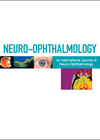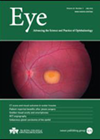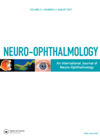You searched for "pituitary"
Neuro-ophthalmic disease patterns in Southeast Asia with particular reference to giant cell arteritis
1 April 2016
| James F (Barry) Cullen, Lakana Kumar Thavaratnam
|
EYE - Neuro-ophthalmology
As indicated in an earlier article in Eye News [1] Dr Cullen was invited in 2000 to the Singapore National Eye Centre (SNEC) as visiting Professor with a specific remit to set up a specialist neuro-ophthalmology service, which was the...
How to examine the visual system Part 1: visual acuity, visual fields and eye movements
1 June 2014
| Emma Linton, Apostolos Fotakakis
|
EYE - Vitreo-Retinal
Asking candidates to perform an examination of the visual system, either as part of a full cranial nerve exam or as an individual entity, is a common station in practical examinations during medical school. It is important to practise for...
The clues of the eye – what is medical ophthalmology?
1 February 2022
| Nima John Ghadiri
The author looks at the increasingly significant role of medical ophthalmologists and the importance of integrative healthcare. The eye is a remarkable organ, and for decades we have been discovering intimations of pathology existing elsewhere in the body [1] simply...
Understanding spaceflight-associated neuro-ocular syndrome (SANS): what do we know?
Introduction Formerly known as visual impairment and intracranial pressure syndrome (VIIP), space-related neuro-ocular syndrome (SANS) is defined by a collection of ophthalmic and neurological findings in astronauts after long-term spaceflight [1]. Changes in the eyeball, such as hyperopic shift, during...Harry Moss Traquair: Edinburgh Ophthalmologist and Father Figure of Perimetry
3 February 2023
| Andrew King
|
EYE - General
It is a unique honour bestowed upon only a few clinicians, that their name becomes for evermore associated with the subject of their particular expertise and knowledge. Such an individual is undoubtedly Harry Moss Traquair, an Edinburgh-based ophthalmologist, who in...
The Real Top Gun: Professor Steve Schallhorn
3 April 2023
| Peter Cackett
|
EYE - General
Steve Schallhorn: Fighter Pilot. In the spring of 1987, I travelled to the cinema at Hendon Central in London with some school friends to watch the newly released movie The Witches of Eastwick starring Jack Nicholson and Michelle Pfeiffer. Unfortunately...
The eye without tears
1 June 2016
| Hector Bryson Chawla
|
EYE - General
The Art is long and Life is short. So goes the dispiriting tag in Latin and flung from day one and at regular intervals thereafter at idle medical students who, inevitably brainwashed, come by graduation to believe that the only...
Saccadic eye movements in young-onset Parkinson’s disease
5 August 2020
| Claire Howard
|
EYE - Neuro-ophthalmology
|
BOLD, Saccadic eye movements, fMRI, young onset Parkinson’s disease
The objective of this study was to understand control of saccadic eye movements in patients with young onset Parkinson’s disease (YOPD) where onset of disease symptoms appears early in life (<40 years of age). Functional magnetic resonance imaging (fMRI) was...
Defence Medical Services Ophthalmology Conference 2024
3 July 2024
-4 July 2024
by Dr Ben Smith, General Duties Medical Officer (Army), Tidworth, UK. This annual national meeting of tri-service defence ophthalmologists was held in the beautiful and historic setting of Merton College in Oxford, hosted by Professor Robert MacLaren, the current Professor...
Computerised tomography in ocular trauma patients
1 October 2015
| Nana Theodorou
|
EYE - Vitreo-Retinal
Ocular trauma can be common in military settings. This retrospective study looked into the relationship between the clinical effects of acute ocular and orbital blast trauma with the findings on computerised tomography (CT). This was a consecutive case series of...
Ophthalmology in a War Zone: an interview with Dr Volodymyr Melnyk
It is now nine months since the full-scale Russian invasion of Ukraine commenced in late February 2022, with Putin announcing a “special military operation” to “denazify and demilitarise” Ukraine. The rest of the world, however, saw it for what it...Unexplained vision loss following exposure to combat
1 February 2018
| Claire Howard
|
EYE - Neuro-ophthalmology
|
Functional visual loss, malingering, non-organic visual loss
Non-organic vision loss (NOVL) is defined as a decrease in visual acuity or visual field without an identifiable organic cause. NOVL can be particularly challenging and time-consuming to diagnose, especially where the vision loss is superimposed on an element of...






